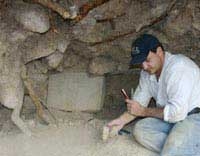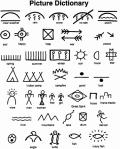An experiment targeting the chaotic and deadly regions of the universe may help explain the origins of life on Earth.
A team of scientists from the Canary Institute of Astrophysics (IAC – Spain) has conducted experiments on how “life cages” known as fullerenes are formed in the universe.
Fullerenes are spherical carbon cages capable of carrying complex compounds inside, traveling vast distances through the harsh environment of interstellar space.
According to Science Alert, researchers have discovered the presence of fullerenes in the dusty, chaotic regions surrounding planetary nebulae.
Planetary nebulae is a misnomer referring to the remnants of old, dying stars that have exploded.

Planetary nebulae are remnants of dead stars – (Graphic image).
Simulations based on a planetary nebula known as Tc 1 have confirmed that it is indeed the chaotic, deadly regions surrounding these nebulae where fullerenes are formed from hydrogenated amorphous carbon particles.
By confirming the formation of fullerenes, scientists also indirectly validate how life may have arrived on Earth in the distant past, as well as the origins of those life seeds.
Clearly, the complex, violent processes in “death zones” like nebulae contribute to the existence of complex molecules.
Through these locally created fullerene cages, prebiotic molecules—considered to be extremely fragile—are protected as they traverse the deadly radiation-filled space between stars.
If lucky, these life cages may reach a young star forming, releasing the life seeds they carry into the protoplanetary disk of that star.
And if that young star is fortunate enough to form a few planets suitable for life like Earth, the prebiotic molecules will germinate and gradually evolve to create a new world teeming with life.
This is the path that the seeds of life for ourselves and all species on Earth have taken in the past.
Thus, this new research provides another important piece in the grand dream of astrobiologists to recreate life on Earth that began amidst the interstellar space.
The results were published in the scientific journal Astronomy & Astrophysics.





















































